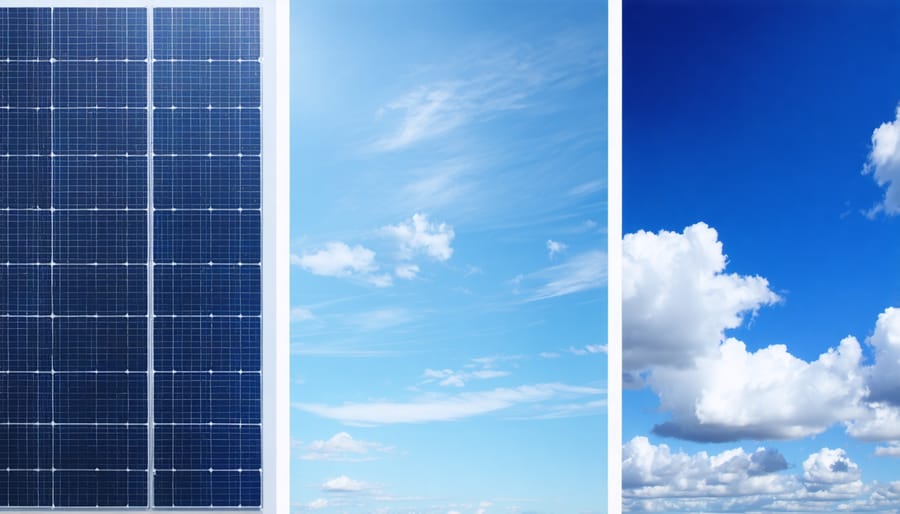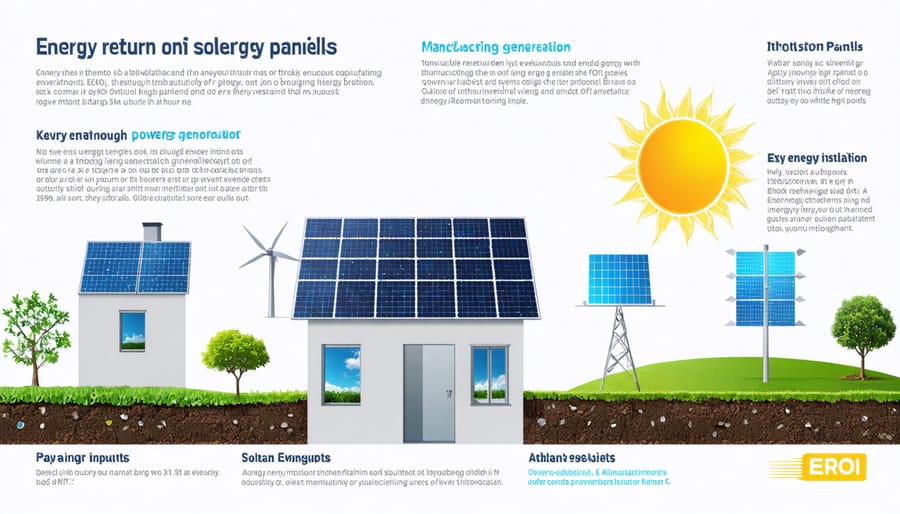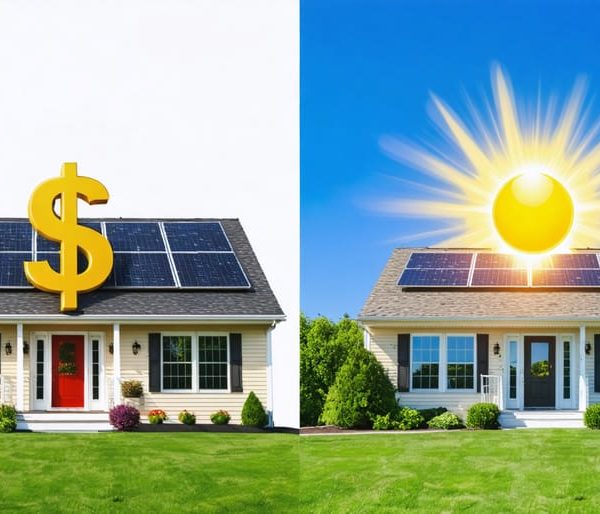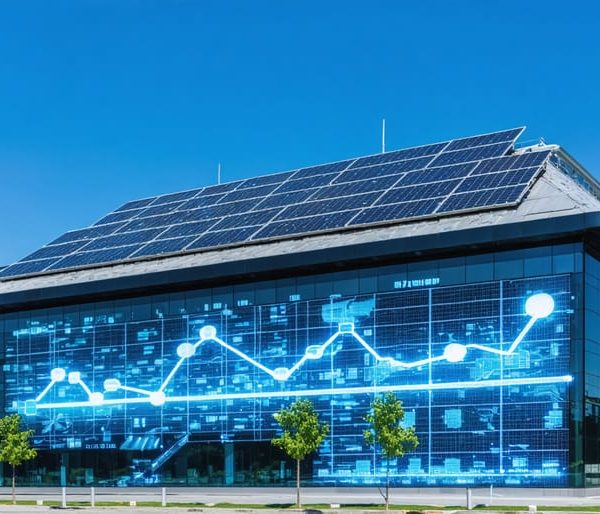Solar Energy’s True Payback: What Every Homeowner Must Know About EROI
Imagine getting more energy out than you put in – that’s the fascinating promise behind Energy Return on Energy Investment (EROI). As our world grapples with climate change and rising energy costs, understanding EROI has become crucial for making smart decisions about our energy future. From solar panels to wind turbines, every renewable energy source requires an initial energy investment to manufacture, install, and maintain. But how much energy do these systems actually generate compared to what they consume?
For homeowners and businesses considering renewable energy, EROI offers a practical way to evaluate different energy options. Think of it like a financial investment – you want the highest return possible on your money. Similarly, the best energy systems deliver significantly more power over their lifetime than the energy needed to create and operate them. Traditional fossil fuels once boasted high EROI ratios of 30:1 or more, but as easy-to-access resources dwindle, those numbers have dropped dramatically. Meanwhile, renewable technologies continue to improve, with modern solar panels achieving increasingly competitive EROI ratios while offering clean, sustainable power for decades to come.
Understanding Solar EROI Basics
What Goes Into EROI Calculations
When calculating the energy return on investment for solar panels, we look at both the energy consumed during production and the energy generated over the system’s lifetime. The manufacturing process includes mining raw materials, processing silicon, assembling panels, and transportation. These steps typically account for most of the energy investment, with silicon purification being particularly energy-intensive.
On the output side, we measure the total electricity a solar panel generates during its 25-30 year lifespan. This varies based on factors like location, panel efficiency, and maintenance. For example, a typical residential solar system in a sunny climate might produce enough energy in 2-3 years to offset its manufacturing energy costs.
Additional energy inputs include installation equipment, mounting hardware, and eventual recycling or disposal. Modern solar technology has significantly improved these ratios, with most panels now producing 10-30 times more energy than required for their production. Regular cleaning and maintenance also play a role in maximizing energy returns, as dirty or damaged panels produce less electricity over time.

Why EROI Matters for Your Home
When considering solar panels for your home, understanding EROI helps you make smarter energy investments. As a homeowner, you want to ensure your solar installation will generate significantly more energy than what’s required to manufacture, install, and maintain it. To calculate your solar return on investment, consider factors like your local climate, roof orientation, and typical energy consumption. A higher EROI means your system will pay for itself faster and provide more long-term value. Modern residential solar installations typically achieve positive energy returns within 1-3 years, making them an increasingly attractive option for environmentally conscious homeowners looking to reduce both their carbon footprint and energy bills.
Real-World Solar EROI Numbers
Residential Solar Panel EROI
Residential solar panel systems typically achieve an EROI between 8:1 and 12:1, meaning they produce 8 to 12 times more energy over their lifetime than what’s required to manufacture and install them. This ratio varies based on location, panel quality, and installation efficiency. For example, a home in sunny Arizona might see higher returns than one in cloudy Seattle.
Modern residential installations usually pay back their energy investment within 1-2 years, while continuing to generate clean power for 25-30 years. A typical 5kW home system requires about 12,000 kWh of energy to manufacture and install, but can generate over 120,000 kWh during its lifetime in favorable conditions.
Real-world data from homeowners shows that proper maintenance and positioning can significantly impact EROI. South-facing panels at a 30-degree angle typically perform best in North America, while regular cleaning can maintain optimal efficiency. Recent technological improvements in panel efficiency and manufacturing processes continue to push these numbers higher, making residential solar an increasingly attractive energy option for homeowners.
Geographic Impact on Solar EROI
The geographic location of your solar installation plays a crucial role in determining its energy return on investment. Sunnier regions naturally yield higher returns, with locations closer to the equator typically generating more power throughout the year. For example, a solar panel system in Arizona or Nevada might produce up to 50% more energy than an identical setup in Maine or Washington state.
Climate conditions, seasonal variations, and local weather patterns all influence solar panel efficiency. Desert climates often provide ideal conditions with clear skies and minimal precipitation, while regions with frequent cloud cover or snow may experience reduced output. However, modern solar technology has evolved to perform effectively even in less-than-optimal conditions.
When planning a solar installation, it’s essential to consider state-specific solar returns, as local incentives and electricity rates can significantly impact your overall EROI. Some northern states with higher electricity costs may actually offer better financial returns despite lower sun exposure, thanks to generous incentive programs and net metering policies.
The angle of installation and tracking capabilities can help optimize energy capture in different locations, ensuring maximum returns regardless of geographic positioning.

Maximizing Your Solar EROI

Installation Optimization
Maximizing your solar installation’s efficiency starts with smart placement and thoughtful system design. The proper positioning of solar panels can significantly impact your solar panel payback period and overall energy returns.
For optimal performance, panels should face true south in the Northern Hemisphere (or true north in the Southern Hemisphere) at an angle matching your location’s latitude. However, slight variations between southeast and southwest are acceptable and may only reduce efficiency by 5-10%.
Consider these key optimization strategies:
– Install panels where they receive unobstructed sunlight between 9 AM and 3 PM
– Avoid shade from trees, buildings, or other structures
– Space panels properly to prevent self-shading
– Use microinverters or power optimizers for installations with partial shade
– Clean panel surfaces regularly and maintain proper ventilation
The mounting system is equally important. Roof-mounted systems are popular for residential installations, while ground-mounted arrays offer easier maintenance access. For flat roofs, tilt racks can achieve the ideal angle for maximum sun exposure.
Modern solar installations also benefit from smart monitoring systems that track performance and identify potential issues before they impact efficiency. These tools help maintain optimal energy production throughout the system’s lifetime, ensuring the best possible return on your investment.
Maintenance Strategies
Proper maintenance plays a crucial role in maximizing the energy return on energy investment (EROI) of renewable energy systems. Regular upkeep ensures that systems operate at peak efficiency, extending their productive lifespan and maintaining optimal energy generation rates.
For solar installations, simple maintenance practices like quarterly panel cleaning can prevent up to 15% loss in energy production. Dust, leaves, and bird droppings can significantly reduce panel efficiency, directly impacting your EROI. Making cleaning part of your routine maintenance schedule helps maintain consistent energy generation levels throughout the year.
Wind turbines benefit similarly from preventive maintenance. Regular bearing lubrication and blade inspection can extend turbine life by up to 25%, significantly improving lifetime EROI calculations. This is particularly important since the initial energy investment in wind turbine manufacturing is substantial.
Battery storage systems, crucial for many renewable setups, require careful monitoring of charge cycles and operating temperatures. Proper maintenance can extend battery life by up to 40%, maximizing the return on the considerable energy invested in battery production.
Professional maintenance checks, while requiring some investment, typically pay for themselves through improved system performance and longevity. Many homeowners report that annual professional inspections help identify potential issues before they become serious problems, preventing costly repairs and system downtime that could negatively impact EROI.
Future Trends in Solar EROI
The future of solar energy’s return on investment looks increasingly promising, with several technological breakthroughs on the horizon. Scientists and manufacturers are developing more efficient solar panels that can capture a broader spectrum of sunlight, potentially increasing energy yields by 20-30% compared to current models. These innovations include perovskite solar cells, which are cheaper to produce and more efficient than traditional silicon-based panels.
Manufacturing processes are also becoming more energy-efficient, reducing the initial energy investment needed to produce solar equipment. Automated production lines and improved material recycling techniques are cutting down on production energy costs, which directly improves the overall EROI of solar systems.
Battery technology is advancing rapidly, with new storage solutions that help maximize the usable energy captured by solar panels. These improvements mean that more of the generated power can be stored and used effectively, rather than being lost during non-peak hours.
Another exciting development is the integration of artificial intelligence in solar systems. Smart algorithms can optimize panel positioning and energy distribution, increasing the overall system efficiency by up to 15%. Combined with self-cleaning panel technologies and more durable materials, these innovations are extending the lifespan of solar installations while reducing maintenance energy costs.
Industry experts predict that by 2030, the energy payback time for solar installations could be reduced to less than one year in most regions, with EROI ratios potentially reaching 15:1 or higher. This improvement makes solar energy an increasingly attractive option for both homeowners and businesses looking to invest in sustainable energy solutions.
Understanding energy return on energy investment (EROI) is crucial for making informed decisions about solar installations. As we’ve explored, modern solar technology offers increasingly favorable returns, with most systems paying for themselves both energetically and financially within 1-3 years while providing decades of clean energy.
For homeowners considering solar investment, the path forward is clear. Start by conducting a home energy audit to understand your consumption patterns. Next, consult with certified solar installers who can assess your roof’s potential and recommend appropriately sized systems. Remember that factors like local sunshine hours, panel orientation, and maintenance requirements all impact your system’s EROI.
Take advantage of available tax incentives and rebates, which can significantly improve your investment returns. Consider battery storage systems to maximize your energy independence and improve overall system efficiency. Regular maintenance and monitoring will ensure your solar installation maintains optimal performance throughout its lifetime.
By making informed decisions based on EROI principles, you’re not just investing in your property – you’re contributing to a more sustainable future while securing long-term energy savings.











